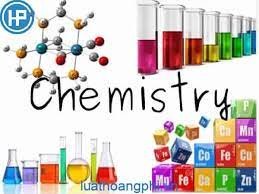Organic Compound Structures: Unraveling the Complexity of Carbon-Based Molecules
Welcome to our website, where we explore the fascinating world of organic compound structures. Organic compounds are carbon-based molecules that form the basis of life and are essential to numerous chemical processes. Join us as we delve into the diverse structural features, functional groups, and properties of these complex compounds.

- Carbon Skeleton: The carbon atom serves as the backbone of organic compounds, forming long chains, branched structures, or rings. These carbon skeletons provide the framework upon which functional groups are attached, giving organic compounds their unique properties and reactivity.
- Functional Groups: Functional groups are specific arrangements of atoms within a molecule that determine its chemical behavior and properties. Examples of functional groups include hydroxyl (-OH), carbonyl (C=O), carboxyl (-COOH), amino (-NH2), and alkyl groups. Each functional group imparts distinct characteristics to the organic compound, influencing its reactivity, solubility, acidity, and basicity.
- Isomerism in Organic Compounds: Isomerism is prevalent in organic compounds due to the presence of different structural arrangements. Isomers can have the same molecular formula but differ in connectivity (structural isomers), spatial arrangement (stereoisomers), or both. Isomerism contributes to the diverse properties and behaviors of organic compounds.
- Aromatic Compounds: Aromatic compounds are a class of organic compounds that contain a benzene ring or related structures. These compounds exhibit unique stability and reactivity due to the delocalization of pi-electrons within the ring. Aromatic compounds are widely encountered in pharmaceuticals, dyes, fragrances, and other industrial applications.
- Heterocyclic Compounds: Heterocyclic compounds are organic compounds that contain one or more atoms other than carbon in the ring structure. These atoms can be nitrogen, oxygen, sulfur, or other elements. Heterocyclic compounds play a crucial role in medicinal chemistry, as many drugs contain heterocyclic structures.
- Stereochemistry: Stereochemistry deals with the three-dimensional arrangement of atoms in organic compounds. Stereoisomers, such as geometric (cis-trans) isomers and optical isomers (enantiomers), have identical connectivity but differ in spatial arrangement. Stereochemistry influences the properties and biological activities of organic compounds.
- Natural Products: Organic compounds are abundant in nature and serve essential roles in biological systems. Natural products include carbohydrates, lipids, proteins, nucleic acids, and secondary metabolites such as alkaloids, terpenes, and flavonoids. These compounds have diverse functions, ranging from energy storage to cell signaling and defense mechanisms.
At our website, we explore the intricate structures and properties of organic compounds, unraveling the complexity of carbon-based molecules. Join us as we delve into the diverse carbon skeletons, functional groups, and isomerism in organic chemistry, appreciating the remarkable diversity and significance of these compounds. Welcome to a place where organic compound structures unlock the secrets of life and inspire innovation in various scientific and industrial fields.

